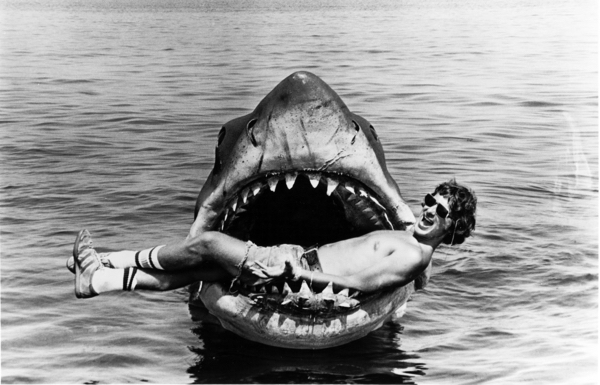Movie review by Greg Carlson
Veteran “American Masters” producer and series creator Susan Lacy, whose access to subjects and breadth of knowledge is the envy of scores of documentarians, looks at Steven Spielberg in a nearly two-and-a-half hour long portrait for HBO. Simply titled “Spielberg,” the movie is surprisingly safe, conservative, and risk-free. Populated with an endless supply of close-up talking heads and anchored by the famous filmmaker’s own on-camera commentary — with many of the anecdotes offered up for what feels like the umpteenth time — Lacy’s result plays like the television equivalent of the Eagles’ multi-platinum greatest hits collection.
For cinephiles, the make-it-or-die-trying determination of the nerdy kid who sneaked and bluffed his way (“print the legend”) to a Universal gig as the youngest ever contract director at a major Hollywood studio is familiar. Really familiar. Even so, an undeterred Lacy’s first in-depth dive is “Jaws,” and the resulting re-cap sets the tone for the remainder of the show. Sustained Jawsmania has already given birth to Laurent Bouzereau’s 1995 making-of doc, Erik Hollander’s 2007 “The Shark Is Still Working,” and Jamie Benning’s 2013 “Inside Jaws,” but the mogul and the great white shark are like peanut butter and jelly: unthinkable to separate, despite the oceans of existing records.
And so it goes. “Close Encounters of the Third Kind” and “E.T. the Extra-Terrestrial” form a one-two punch between a “movie brats” roster breakdown accompanied by home-movie film and a note on Spielberg’s magic touch with child actors. The latter, punctuated by a behind-the-scenes clip of the director’s grimace into the camera while comforting a sobbing Drew Barrymore, recognizes the fraught terrain of emotional manipulation by directors looking to acquire the perfect shot by any means necessary. A thought from Leonardo DiCaprio hints at a more complex exploration of the matter, but Lacy moves on.
More big dogs are lined up for veneration, with “Schindler’s List” and “Jurassic Park” each receiving predictable scrutiny, but to her credit Lacy introduces a few unexpected surprises. A short but refreshing account of “1941” is one early, albeit rare, example that Spielberg could stumble hard. Even more satisfying is the way in which Lacy covers the director’s inability and/or unwillingness to dig more deeply into the relationship between Shug and Celie in “The Color Purple,” as Spielberg blushes at the very notion that his adaptation could have included the mirror scene. Ultimately, any more serious considerations of race and sexuality fail to make the cut.
Lacy also skirts most charges of Spielberg’s tendencies toward sentimentality, but a handful of acknowledgements, including one by Tom Stoppard, turn up. A lukewarm appraisal of whether massive commercial success and blockbuster appeal preclude the possibility of artistic merit hovers at the fringes, and J. Hoberman — one of several critics invited to participate in the movie — tantalizingly assesses the value of Spielberg’s apparent humanist neutrality in “Munich,” referring to the filmmaker as “the Hollywood equivalent of a public intellectual.” It is also during the section on “Munich” that Lacy demonstrates Spielberg’s potent sense of spatial orientation. Without specifically invoking Hitchcock or mentioning the privileged viewer, Spielberg argues soundly on behalf of suspense.
Overall, however, Lacy pays very little attention to Spielberg’s directorial technique ala the “pure cinema” discussed by Kevin B. Lee in “The Spielberg Face.” Thematic approaches, especially those concerned with divorce and the dissolution/reunification of the family fare much better, and Lacy makes excellent use of Spielberg’s sisters Nancy, Anne, and Sue, as well as father Arnold (currently 100 years old) and mother Leah Adler (who died in February), to underline the biographical touches to which Martin Scorsese alludes when describing Spielberg’s oeuvre as deeply personal.
